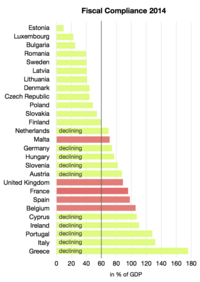
Photo from wikipedia
Objectives In the current study, we examined the relationship between differentiation of self (DoS) and key relationship functioning variables among couples. This is the first study to test such relationships… Click to show full abstract
Objectives In the current study, we examined the relationship between differentiation of self (DoS) and key relationship functioning variables among couples. This is the first study to test such relationships using a cross-cultural longitudinal approach (i.e., samples from Spain and the U.S.) while controlling for stressful life events–a key theoretical construct in Bowen Family Systems Theory. Methods A sample of 958 individuals (n = 137 couples from Spain, and n = 342 couples from U.S.) was used in cross sectional and longitudinal models to analyze the effects of a shared reality construct of DoS on anxious attachment, avoidant attachment, relationship stability, and relationship quality while considering gender and culture. Results Our cross-sectional results indicated that men and women from both cultures experienced an increase in DoS over time. DoS predicted increased relationship quality and stability and decreased anxious and avoidant attachment in U.S. participants. Longitudinally, DoS predicted increased relationship quality and decreased anxious attachment for Spanish women and men, while it predicted greater relationship quality and stability and decreased anxious and avoidant attachment of U.S. couples. Implications of these mixed findings are discussed. Conclusions Higher levels of DoS are linked with a better couple relationship across time, despite varying levels of stressful life events. Although some cultural differences regarding the links between relationship stability and avoidant attachment exist, this positive link between differentiation and the couple relationship is mostly consistent across the U.S. and Spain. The implications and relevance for integration into research and practice are discussed.
Journal Title: PLOS ONE
Year Published: 2023
Link to full text (if available)
Share on Social Media: Sign Up to like & get
recommendations!